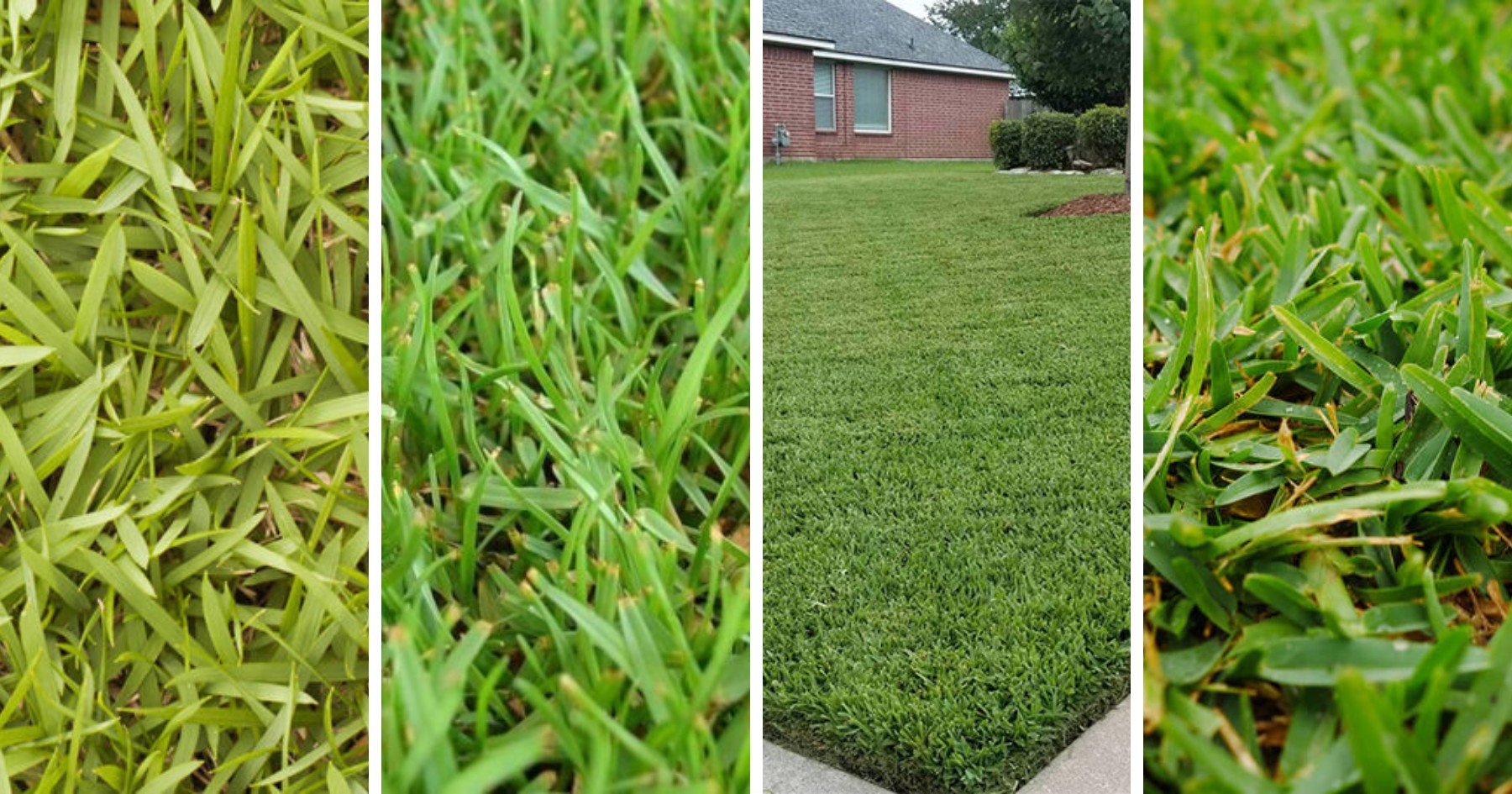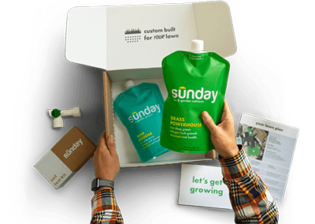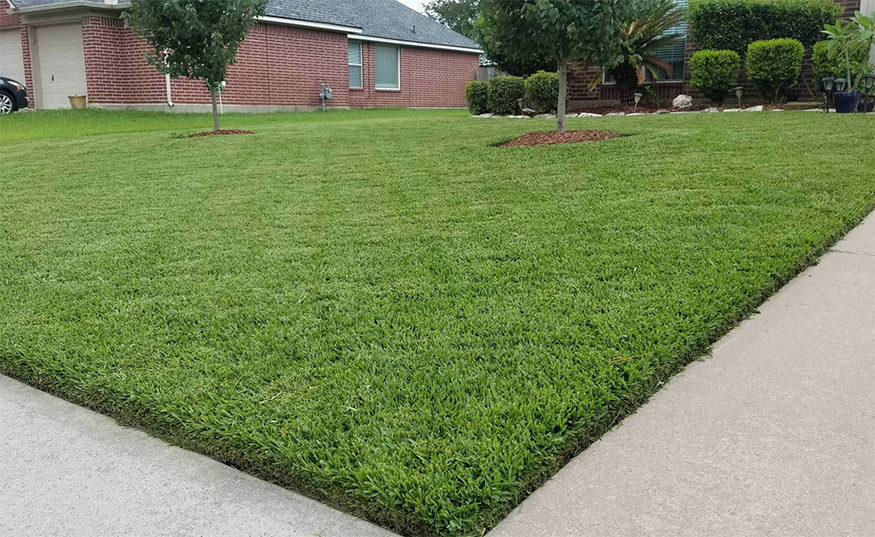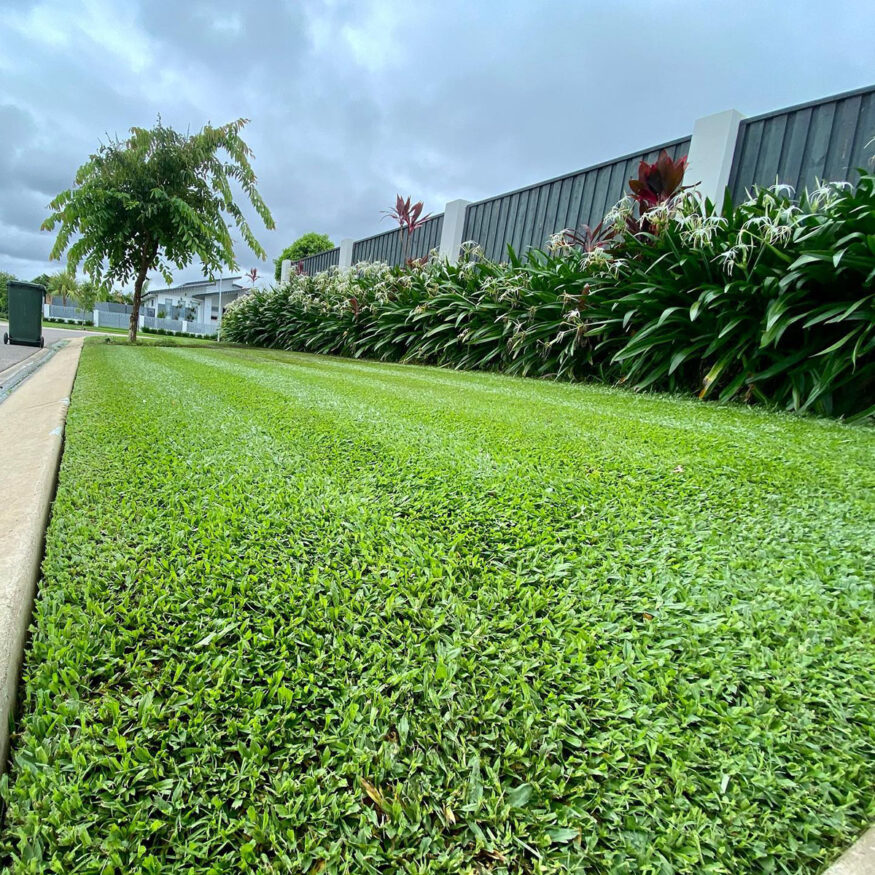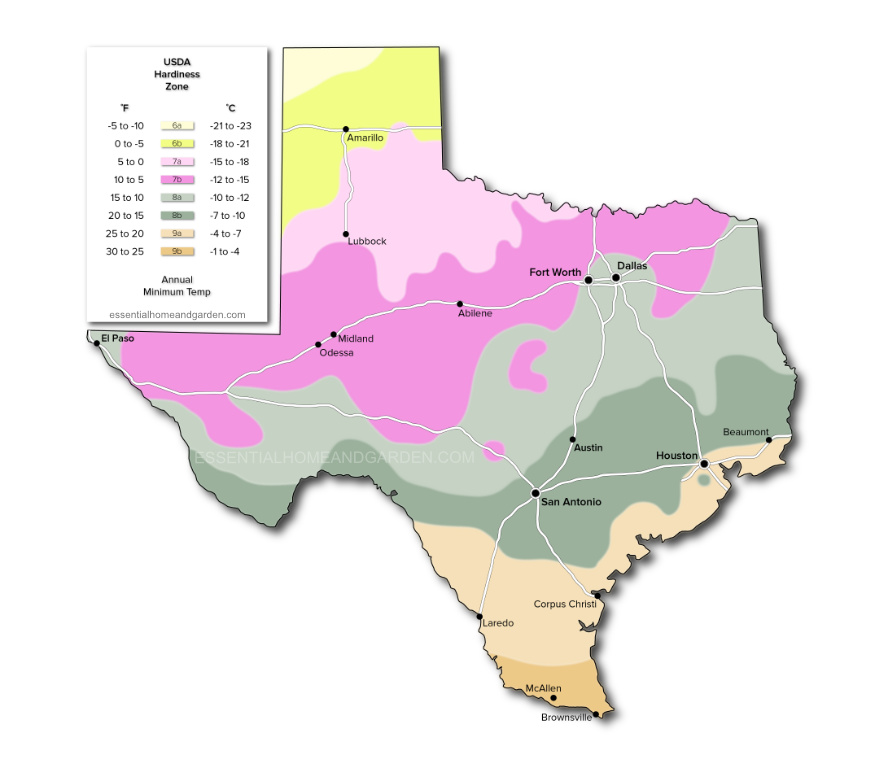If you’re living in the Lone Star State, specifically North Texas, and wondering “what’s the best grass for my lawn?”, we’ve got the answer for you. The quick answer is Bermuda grass, a great option that is quite popular in Texas lawns. However, North Texas lawns face unique challenges, such as intense heat and drought, hence the decision isn’t quite as simple as it seems.
To help you make a more informed choice, we’ve compiled a detailed guide exploring top grasses for North Texas, including Buffalograss, Zoysia, and the ever-resilient St. Augustinegrass. Each of these grasses offers different benefits, and understanding these will allow you to select the right one for your lawn.
So, whether you’re battling weeds, dealing with areas of high traffic, or simply trying to achieve the perfect green carpet, we’ve got you covered. Read on to discover the perfect lawn grass for your North Texas yard.
[ez-toc]
Looking for the best grass seed for your region?
Our smart lawn plans are designed to work perfectly with your local soil and climate conditions, without any of the toxic stuff.
Use the code EHG20 for an instant $20 discount!
- Personalized lawn care: Custom lawn plans based on soil analysis, climate data, and your specific lawn needs.
- Convenience with a conscience: Products that are not only easy to use but also safe for you, your pets, and the planet.
- Science-backed formulas: Bio-based formulas contain effective, natural ingredients like seaweed, molasses, and iron.
- Expert support: Get one-on-one guidance from a real person and rest easy with Sunday's satisfaction guarantee.
Bermuda Grass
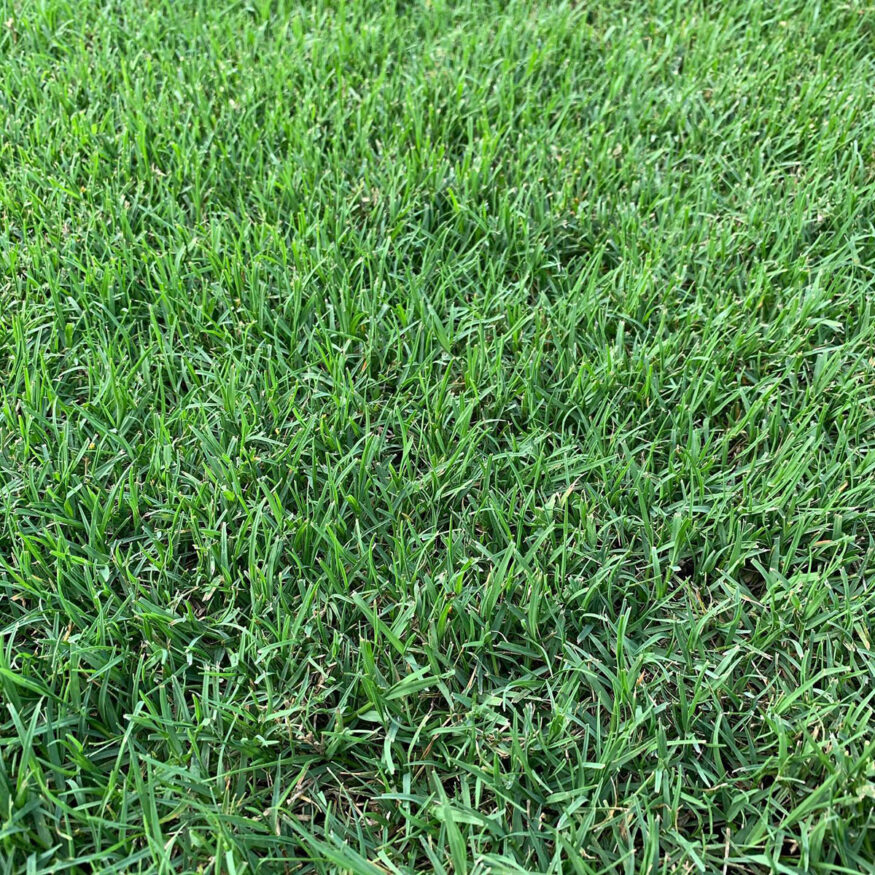 Source: sunny.bermuda on Instagram
PIN IT
Source: sunny.bermuda on Instagram
PIN IT
| Also Known As | Bermuda grass, wiregrass; Cynodon dactylon L. |
| Type of Grass | Warm season perennial |
| Optimal Zones | Southern region |
| Root Structure | Deep |
| Winter hardiness | Poor |
| Heat tolerance | Excellent |
| Shade tolerance | Poor |
| Water Requirements | High |
| Drought Tolerance | High |
| Self Repair Capacity | Excellent |
| Overall Maintenance Requirements | Moderate to High |
Why Bermuda Grass is The Most Popular Choice For North Texas
Bermuda grass is one of the most popular choices for North Texas homeowners. Why? Bermuda grass, also known as Cynodon dactylon, is a warm-season grass that thrives in the Texas heat and can withstand drought conditions. This makes it a great choice for the sweltering Texas summers.
Bermuda grass is also a hardy variety. This means it can handle a lot of foot traffic, perfect for those backyard barbecues and summer games of catch. It’s also a fast grower and can prosper from seed or sod. Whether your soil is shallow or deep, Bermuda grass is versatile enough to flourish.
But no grass is perfect, and Bermuda is no exception. Its Achilles’ heel? Shade. Bermuda grass loves the sun and doesn’t fare well under tree cover. Even a bit of shade could result in bare patches on your otherwise lush lawn. If your yard is heavily shaded, you might want to consider other varieties such as Zoysia or Augustine grass.
So, if you decide Bermuda grass is the right fit for your North Texas lawn, how do you care for it? Mow your Bermuda lawn regularly, keeping it at a height of 1 to 2 inches. And remember, don’t scalp the grass.
As for watering, hold off until May, water only as necessary to avoid drought stress. Fertilize your lawn once it’s actively growing and you’ve mowed a couple of times. This usually occurs between mid-April and May. For the best results, test your soil before applying fertilizer.
Our recommendations for Bermudagrass Seed are:
Related Article: The best grass seed for Texas lawns.
St. Augustine Grass
| Also Known As | St. Augustinegrass; Stenotaphrum secundatum |
| Type of Grass | Warm season perennial |
| Optimal Zones | Southern coastal |
| Root Structure | Shallow |
| Winter hardiness | Very poor |
| Heat tolerance | Excellent |
| Shade tolerance | Good |
| Water Requirements | Moderate |
| Drought Tolerance | Moderate to High |
| Self Repair Capacity | Moderate |
| Overall Maintenance Requirements | Moderate to High |
What Makes St. Augustine A Great Grass For North Texas
St. Augustine is a standout choice for Texas lawns, especially in the northern parts. It’s one of the top grasses for North Texas, offering better heat and humidity tolerance than many other types, including Bermuda grass and Zoysia.
St. Augustine grass also has a remarkable tolerance for shade. So, if your landscape includes a lot of trees, this grass type may be the ideal choice. Its versatility extends to various soil types too, making it great for a variety of yards across North Texas.
St. Augustine grass does require a bit of attention. The mowing height is important; ideally, you should keep it between 2 ½ to 4 inches. It’s also crucial to water your lawn when the grass starts to fold and turn blue.
Fertilization is another aspect to consider. Your St. Augustine lawn will thrive best when fed regularly. Start fertilizing in spring as the grass greens up, and maintain a schedule of every 6 to 8 weeks throughout the summer.
St. Augustine grass also has some downsides. For one, it’s not typically planted with seeds as it doesn’t produce many viable ones. It’s also susceptible to chinch bugs, which can quickly wreak havoc on your beautiful green carpet.
Maintaining this grass variety can be somewhat costly and time-consuming, especially given the need for extra fertilization over the first three months. But considering the lush, green landscape it offers, many homeowners find this trade-off worth it.
Learn More: Read our comprehensive state-by-state grass selection guides here.
Zoysia grass
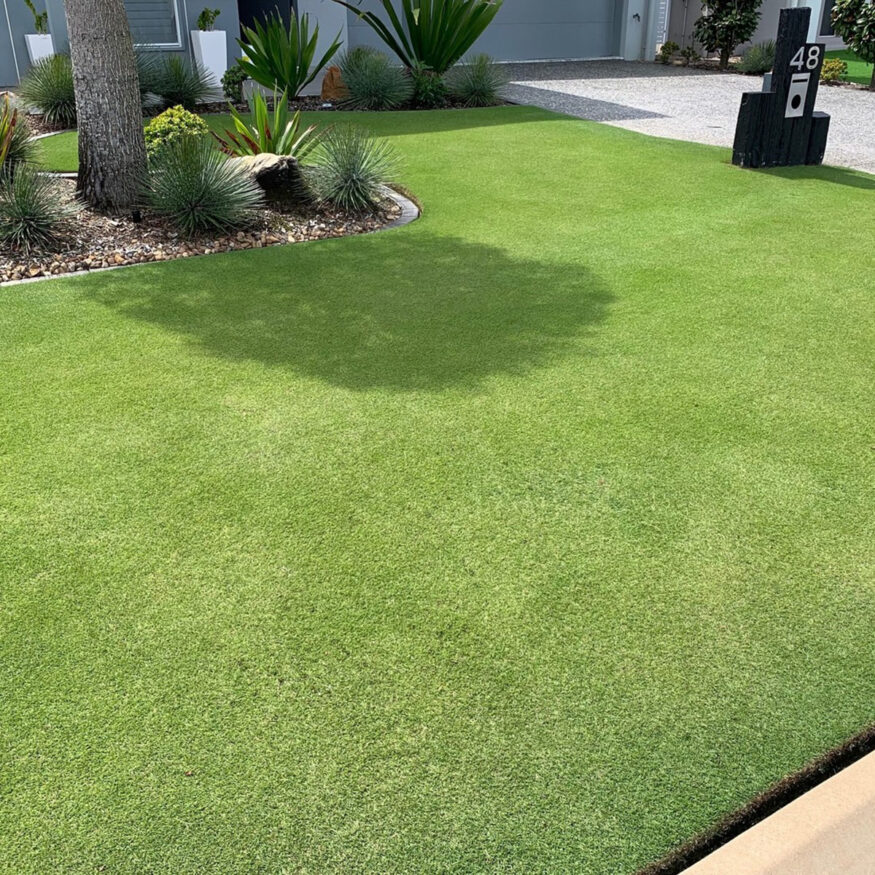 Source: lawnsolutions on Instagram
PIN IT
Source: lawnsolutions on Instagram
PIN IT
| Also Known As | Zoysiagrass; Zoysia sp. |
| Type of Grass | Warm season perennial |
| Optimal Zones | Southern through warmer transition zones |
| Root Structure | Shallow to medium |
| Winter hardiness | Good |
| Heat tolerance | Excellent |
| Shade tolerance | Partial |
| Water Requirements | Medium |
| Drought Tolerance | Good |
| Self Repair Capacity | Low |
| Overall Maintenance Requirements | Moderate |
Why Zoysiagrass Grows well in Northern Texas
This warm-season grass not only thrives in the heat, but unlike many of its counterparts, it can also handle the occasional cold snap. So, when your buddies are fretting over their Bermuda or Augustine grasses wilting in the face of a sudden frost, you can kick back and admire your Zoysia lawn’s resilience.
Zoysia’s drought tolerance is another feature that sets it apart. North Texas isn’t known for its abundant rainfall, and water restrictions can be a common occurrence. But with Zoysia, you won’t be left with a parched, brown landscape. This turf is a great at surviving with just an inch of water per week, and its deep root system allows it to weather brief droughts with ease.
And for those of you who love a beautiful lawn but dread the maintenance, Zoysia is a real game-changer. This grass type requires less mowing and fertilizing than other varieties like Bermuda grass or Buffalo grass. Just remember to keep it between 1-3 inches tall, and fertilize every 6 to 8 weeks during the growing season with a balanced blend of nitrogen, phosphorus, and potassium.
But, like any grass species, Zoysia isn’t perfect. While it’s a great choice for sunny North Texas lawns, just like Bermudagrass, it doesn’t fare well in shady areas. If your yard has a lot of trees or large structures creating shadowy spots, you might want to consider other options like St. Augistine. Zoysia is also a slow spreader, so patience is key when establishing your lawn. And while it’s a hardy turf, getting it started from seed can be a bit tricky.
Despite these minor drawbacks, Zoysia remains one of the best grasses for North Texas lawns, given its hardiness under local conditions. It’s a top choice for homeowners who want a lawn that’s low maintenance, yet beautiful and resilient, no matter what the Texas weather throws at it.
Buffalograss
| Also Known As | Buffalograss; Buchloe dactyloides |
| Type of Grass | Warm season perennial |
| Optimal Zones | Northern, transition, and southern zones |
| Root Structure | Very deep |
| Winter Hardiness | Great |
| Heat Tolerance | Great |
| Shade Tolerance | Poor |
| Water Requirements | Low |
| Drought Tolerance | Excellent |
| Self Repair Capacity | Moderate to high |
| Overall Maintenance Requirements | Low after establishment |
Why Buffalograss Is a Popular Grass Seed Choice
Buffalograss is a top choice for Texas lawns, and for good reason! This grass type is native to the region; it knows the climate and thrives in it.
Unlike other grasses like Bermuda grass or Zoysia that might struggle in the Texas heat, Buffalograss loves it. It’s remarkably heat and drought tolerant which means it needs less watering than your average lawn grass. We’re talking watering every 21-45 days, folks! Now that’s a water-wise choice for your landscape.
Buffalograss is also quite low in maintenance requirements. With its natural disease resistance, it requires less fussing over. It’s also a beauty to behold, producing a uniform and attractive turf that ranges from spring green to blue green.
Let’s take a look at Buffalo grass’ downsides. It might not be the best for those shady areas under your tree or for those low spots in your yard where water tends to collect. For these conditions, you might want to consider other varieties like St. Augustine. And while it can stand up to some foot traffic, if you’ve got a bustling backyard, Bermuda or Centipede grass might be a better choice.
When it comes to care, Buffalograss needs at least 6 hours of direct sunlight per day and well-draining soil to be its best. Fertilization is minimal – just a pound of nitrogen per 1,000 square feet twice a year – once in spring and once in summer. The mowing height is also low, between 2-4 inches.
So, if you’re looking for a great, low-maintenance option for your North Texas lawn, Buffalograss could be it. It’s a cool-season grass that’s tough, good-looking, and well-suited to the conditions.
North Texas’ Climate And Growing Challenges For Lawns
The Texas weather can be a real test for your lawn. Summers in North Texas are sizzling, with temperatures often soaring above 100°F. This intense heat can quickly parch your grass, making it challenging to maintain a lush, green lawn.
Soil Conditions: A Crucial Factor
The soil in North Texas can pose a challenge for many grass types. Local soil tends to be alkaline, which can affect the health and color of your lawn grass. Bermuda grass and Zoysia are top picks, given their tolerance for these conditions.
Water Conservation: A Necessity
A significant challenge for maintaining beautiful lawns in North Texas is water conservation. Homes in this region expend 50-70% of their water usage on lawn care.
With drought being a common occurrence and reservoir levels critically low, it’s essential to choose grasses that need less water.
Looking for the best grass seed for your region?
Our smart lawn plans are designed to work perfectly with your local soil and climate conditions, without any of the toxic stuff.
Use the code EHG20 for an instant $20 discount!
- Personalized lawn care: Custom lawn plans based on soil analysis, climate data, and your specific lawn needs.
- Convenience with a conscience: Products that are not only easy to use but also safe for you, your pets, and the planet.
- Science-backed formulas: Bio-based formulas contain effective, natural ingredients like seaweed, molasses, and iron.
- Expert support: Get one-on-one guidance from a real person and rest easy with Sunday's satisfaction guarantee.
